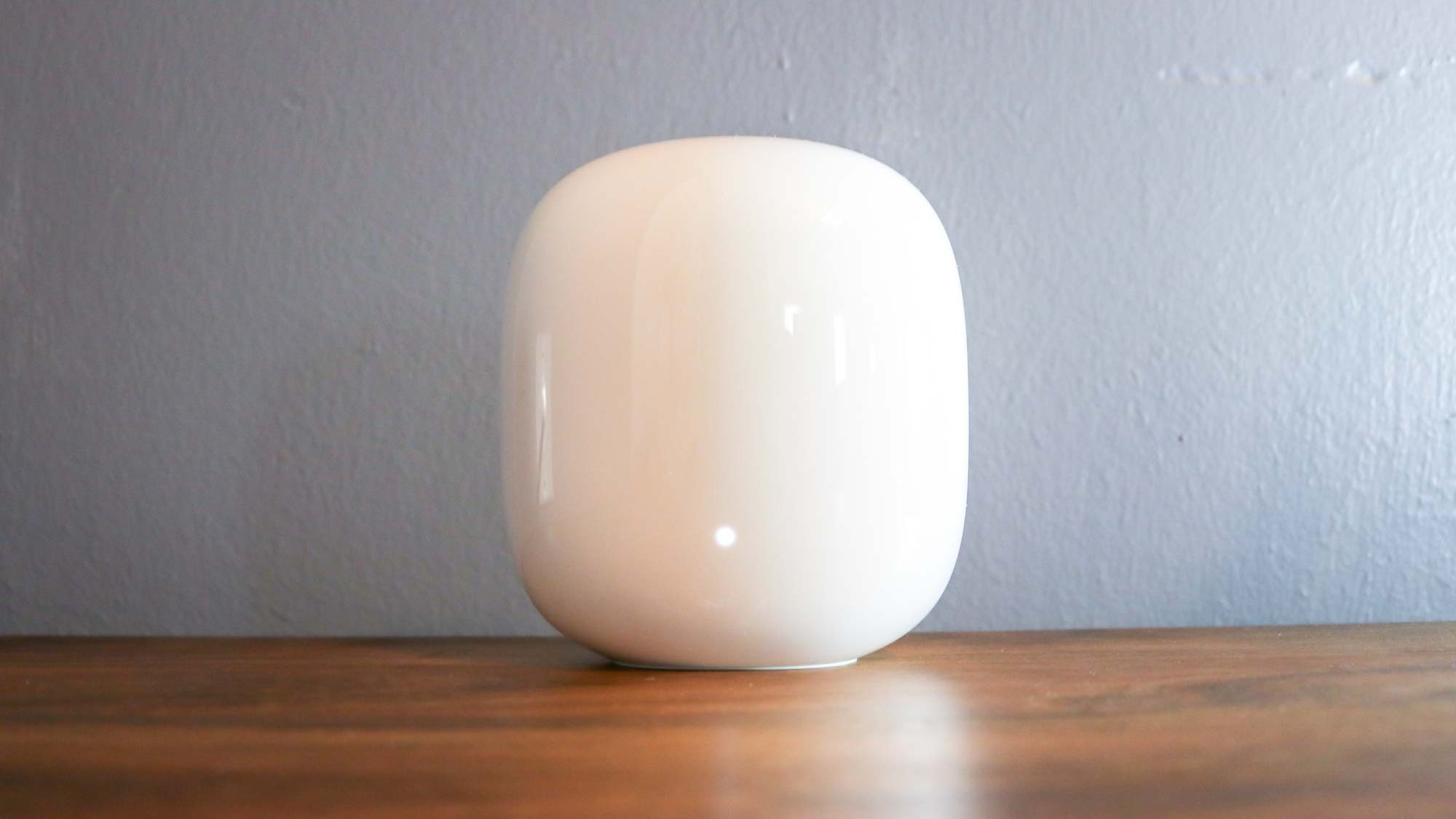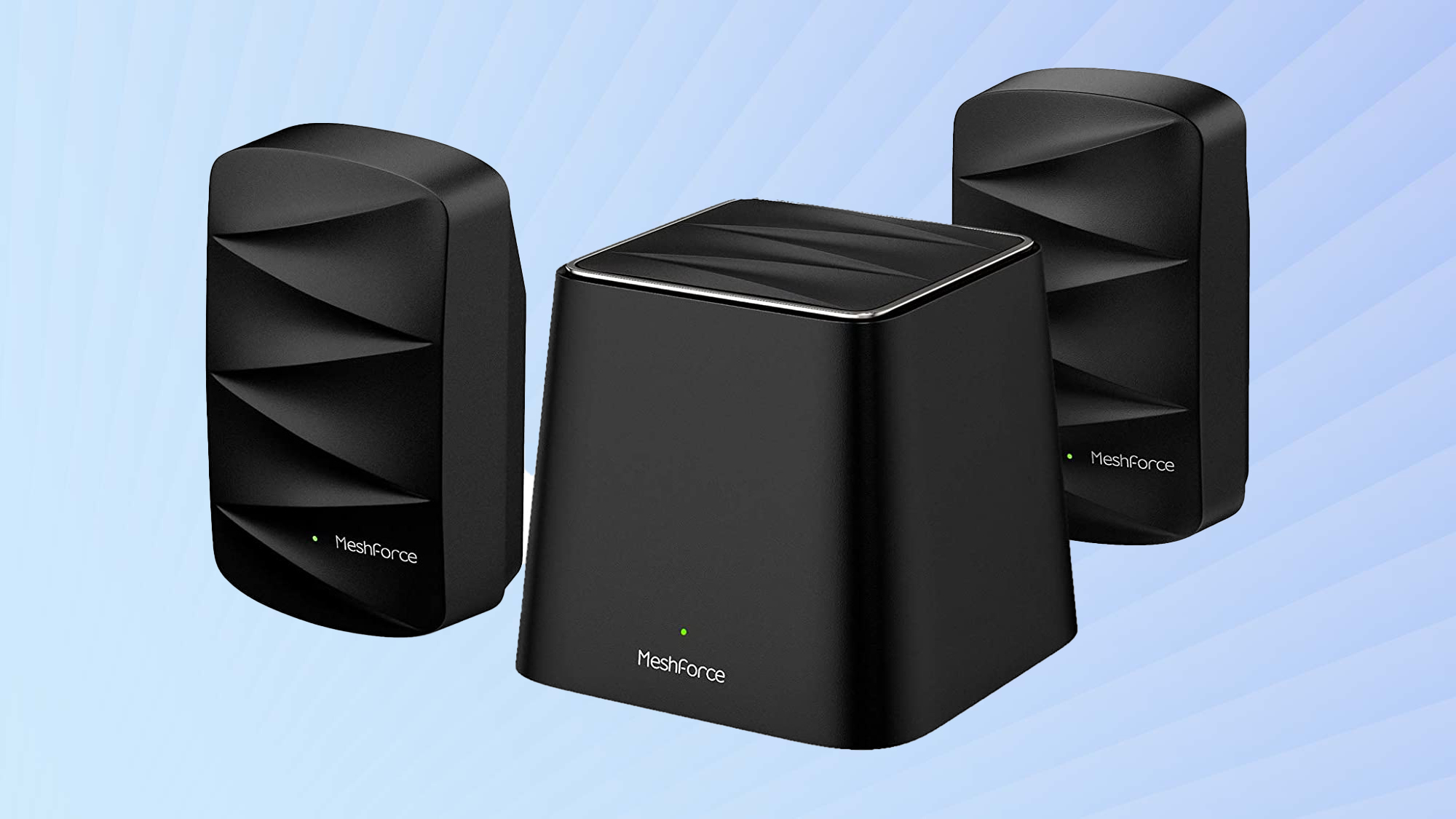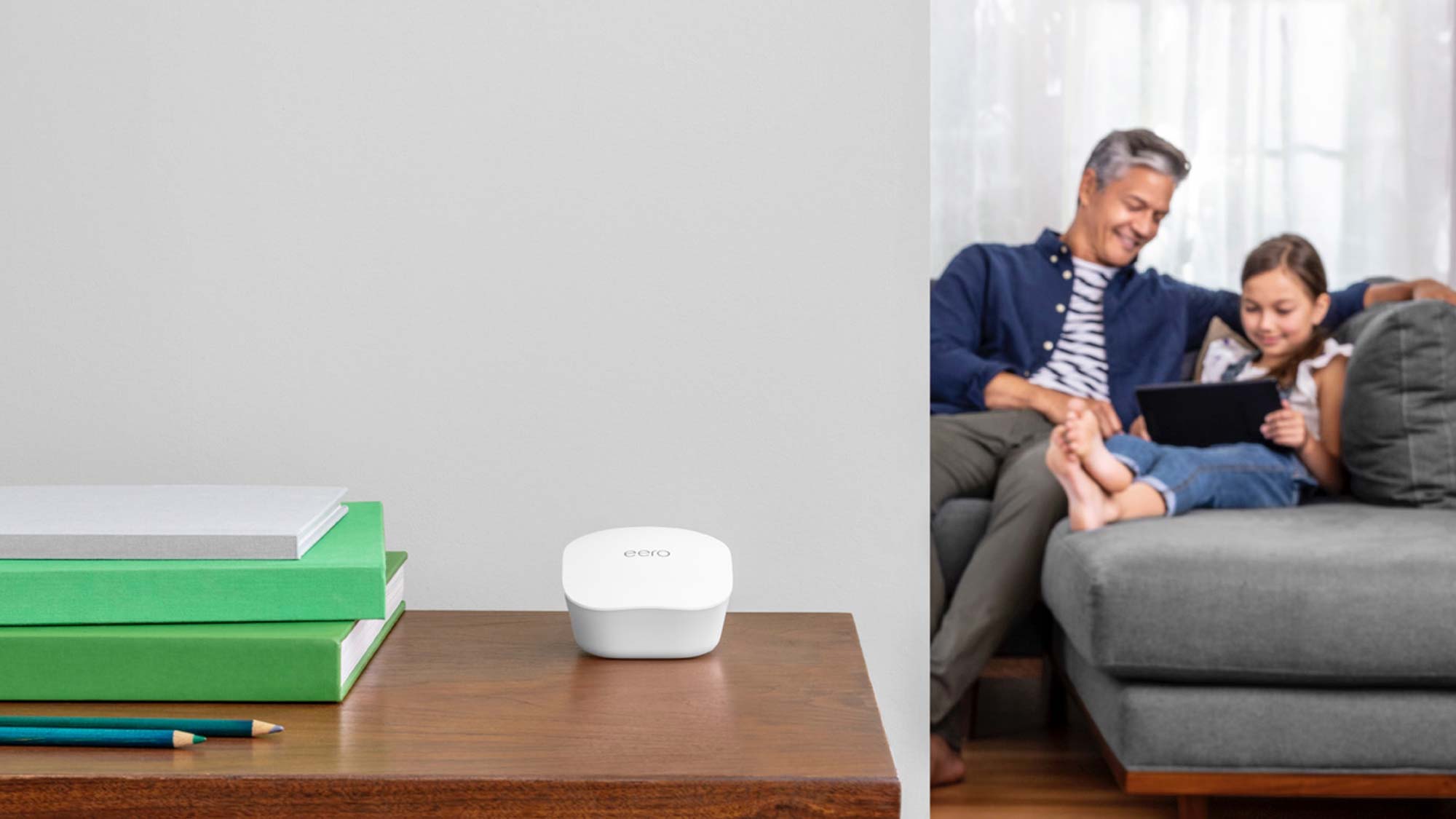
A mesh Wi-Fi system is the perfect upgrade for your home network as it eliminates Wi-Fi dead zones while giving you a strong connection in every room of your house. Even better, unlike with one of the best Wi-Fi extenders, you end up with a seamless Wi-Fi network throughout your entire home so you won’t need to worry about switching networks as you move from room to room.
If you’re planning to move from an apartment into a house, your current Wi-Fi router likely won’t cut it when it comes to filling every room with a strong signal. Instead if you have a large home — at least 3,000 square feet — or one with an odd layout that has more than two stories or brick walls in its interior, then you’re probably going to encounter Wi-Fi dead zones. If this is the case, then your home could be the perfect candidate for a mesh Wi-Fi system.
Here's everything you need to know about mesh Wi-Fi systems.
Modern mesh Wi-Fi systems are super simple to set up as they come with dedicated apps while also letting you put an end to Wi-Fi dead zones once and for all by filling in any gaps in your home coverage. Once installed and configured, you can enjoy faster Wi-Fi in every room of your house as well as in your backyard.
Here’s everything you need to know about what the best mesh Wi-Fi systems do and whether one might be right for your home.
Mesh Wi-Fi system vs a traditional Wi-Fi router
A regular Wi-Fi router creates a single access point that broadcasts Wi-Fi signals to limited area whereas mesh networks link two or more access points (which are also called satellites) together with your router.
With a mesh Wi-Fi router, one access point acts as the router or base station and connects to one of the best cable modems to get internet access. Meanwhile, the other nodes act as satellites, receiving internet from the base station and then rebroadcasting it to nearby devices.
All of these units share data back and forth and provide multiple sources of Wi-Fi. One of the best things about a mesh system is that unlike with Wi-Fi extenders, they all share the same network, so you won’t have to switch to a new network as you move throughout your house.

Several of the big players in consumer networking equipment offer mesh-router solutions. Google’s Nest Wifi used to be one of our top picks thanks to its excellent performance, easy setup and the fact that each access point also works like a Google Home speaker. However, its new Nest Wifi Pro loses its predecessor's' smart speaker capabilities in favor of adding Wi-Fi 6E support.
The Netgear Orbi line is another long-time favorite, delivering great performance across a growing ecosystem of products from the latest Netgear Orbi WiFi 6e to the original Orbi RBK50.
For more affordable mesh networking, we really like the TP-Link Deco X20 as it provides great Wi-Fi 6 speeds for the whole house without costing much more than a standalone unit. If you want upgrade to the latest wireless standard though, the TP-Link Deco XE75 supports Wi-Fi 6E at a reasonable price. We also recently rounded up the best cheap mesh routers for those on a tight budget and these devices can fill your home with Wi-Fi for less than $100.
Given their increased popularity, you may be wondering whether a mesh router might work for you. If that’s the case, here’s an overview of this new take on home networking to help you decide if a mesh Wi-Fi system is the right choice for your needs.
The basics of a mesh Wi-Fi router
At the center of all traditional Wi-Fi networks is the router which broadcasts a wireless signal to all the devices you want to get connected online.
A router, as its name suggests, seamlessly routes internet traffic between a connected modem and Wi-Fi enabled gadgets like computers, tablets or smartphones. Most people completely forget about their routers though, until their Wi-Fi signal goes down.

The main issue with traditional routers is that the reach of the Wi-Fi signals they send out is limited. Large buildings that require internet access on multiple floors often have areas with little or no service, often referred to as dead zones, when the main network uses a standard single-point router.
Mesh routers can help eliminate dead zones though. Instead of broadcasting Wi-Fi signals from a single point, mesh router systems feature multiple access points. One node links to the modem and acts as the router, while the other access points or satellites, capture the router’s signal and rebroadcast it to each other.
For those who aren’t sure if they need a mesh Wi-Fi system, or plan on moving into a larger home soon, you don't have to commit to a pack of two or three mesh units to benefit from the expandable coverage of mesh Wi-Fi.
Many of the latest standalone routers can actually be set up as base stations for mesh coverage and then you can expand your Wi-Fi further by adding more nodes from the same manufacturer down the line. This way you don’t have to get rid of your current equipment.
The benefits of mesh routers
Besides creating a strong, reliable Wi-Fi signal throughout your whole home, mesh Wi-Fi systems have a few other notable benefits which include:
1. Easy Network Management: One main feature that distinguishes mesh routers from traditional routers is the easy network access they provide. Many mesh routers are totally automated which allows for easy management through a mobile app, even when you’re not at home. Setting up a mesh router with a smartphone app is far easier than plugging a computer directly into a router and configuring it through your browser.
Many mesh router apps allow users to quickly scan their speeds, cut off Wi-Fi access to certain networks, create guest networks, test the quality between various connection points and even connect to smart home devices. Some high-end traditional routers have similar features, but you’ll usually need to be connected to the local network using a desktop web interface to turn them on.

2. Streamlined connections: With traditional routers, Wi-Fi extenders are often used to repeat the signal so a Wi-Fi connection can reach even further. However, even the best Wi-Fi extenders require you to create a separate network (with a separate name) for the range extender. This means you’ll likely have to manually switch Wi-Fi connections as you move around your house.
A mesh router on the other hand, doesn’t require constant reconnections, even as you move from room to room. You also won’t have to deal with as much lag as the access points all broadcast the same signal, rather than having to route requests through multiple networks.
3. Tight security: Along with easy management, mesh routers often come with improved security. Thanks to the aforementioned easy network management, it’s not hard to keep your devices safe as many automatically check for and install firmware updates.
The drawbacks of mesh routers
Like most pieces of networking equipment, mesh Wi-Fi systems aren’t without their drawbacks. Here are a few of the bigger ones.
1. High costs: A good two piece mesh-router kit will likely cost $200 or more, with additional satellites costing $100 to $600 each. The standalone models on our list of the best Wi-Fi routers generally range from $80 to $250, while Wi-Fi extenders can run anywhere from $20 to $100. That’s a big price difference, even for the most basic mesh-router setup. Fortunately though, we've also rounded up the best cheap mesh Wi-Fi systems that can all be had for under $100
2. Wasted resources: In small homes and buildings, mesh routers are often a bigger solution than what is needed. Covering 3,000 to 5,000 square feet with a simple two-unit mesh network is overkill for many homes.
If you don’t regularly have Wi-Fi connectivity issues or your internet demands aren't extensive, a mesh router may be excessive. A few Wi-Fi dead zones can be easily fixed with a range extender, by putting your existing router in a more central location or by upgrading to a better traditional router with longer range.

3. More equipment: Although most mesh-router system access points are small and discreet, you may actually need several of them to take full advantage of their capabilities. This means finding places for multiple devices throughout your home. This could be annoying for those who prefer to keep their networking devices limited to one or two inconspicuous locations.
Do you need a mesh router?
Many traditional routers can’t fully cover large houses with multiple floors and walls that block wireless signals. At the same time, if you’re interested in smart home features, mesh routers offer easy remote management through their mobile apps which is a huge plus.
On the other hand though, if you live in a small home or apartment and only see your Wi-Fi connection dropping every so often, you can probably pass on a mesh router. A simple Wi-Fi extender, or even a long-range router, will work just as well to get rid of any Wi-Fi dead zones.
Slow internet speeds or Wi-Fi dead zones aren’t something you have to deal with when you have the right networking equipment. If you’re tired of constantly having to reset your router or adjust its antennas, now is a great time to upgrade to a new traditional router with more coverage, a mesh router kit or a range extender – whichever product best fits your current situation and budget. All are optimized to deal with obstructions and can connect homes using a variety of frequencies.
There are plenty of wireless networking products that can give your home Wi-Fi signal a major boost, so analyze your Wi-Fi needs first to determine which solution is best for your home. The best speed test apps can also be really useful when determining whether or not you need a mesh Wi-Fi system.
Adding mesh routers to your existing network
While most mesh Wi-Fi systems are sold in a package of two or three devices, with the option of adding additional nodes for wider coverage, a lot of newer routers and extensions are made to offer mesh capability.
If you like your existing router, but want to get that same coverage across a larger area, you can sometimes do that by adding one or more mesh nodes, creating a mesh system without replacing the hardware you already have.
Many routers, like the Linksys Max Stream MR9600, can be doubled up with mesh nodes from the same brand to create a mesh network. It's a handy function that gives you the choice of of a single unit for smaller homes and apartments or a more expansive mesh system for larger homes.
Wi-Fi extenders traditionally aren't capable of creating mesh networks, but that's also changing, with products like the Netgear AX1800 Mesh Extender (EAX20) . When paired with other devices, it offers the same coverage and network, with no need to manually switch networks or bands when you move from one end of the house to another.
The best part? It's not limited to Netgear products but works with any wireless router, including the combination modem/router gateway devices provided by many internet service providers.







